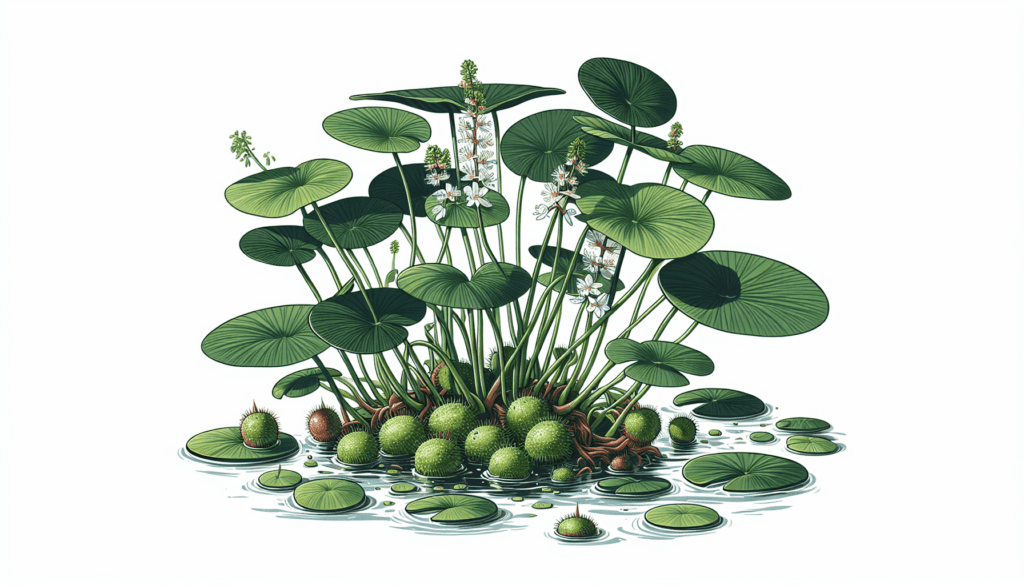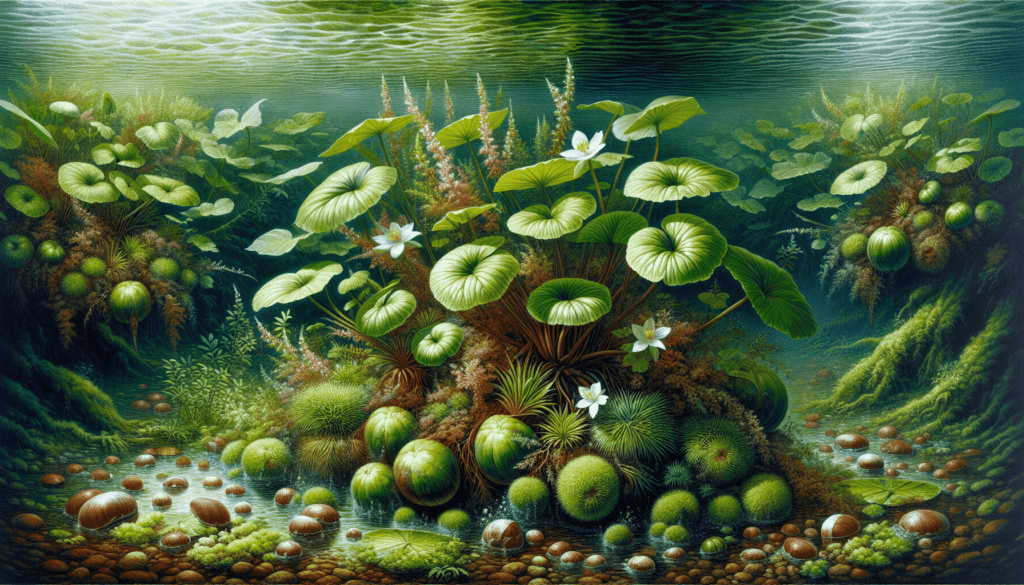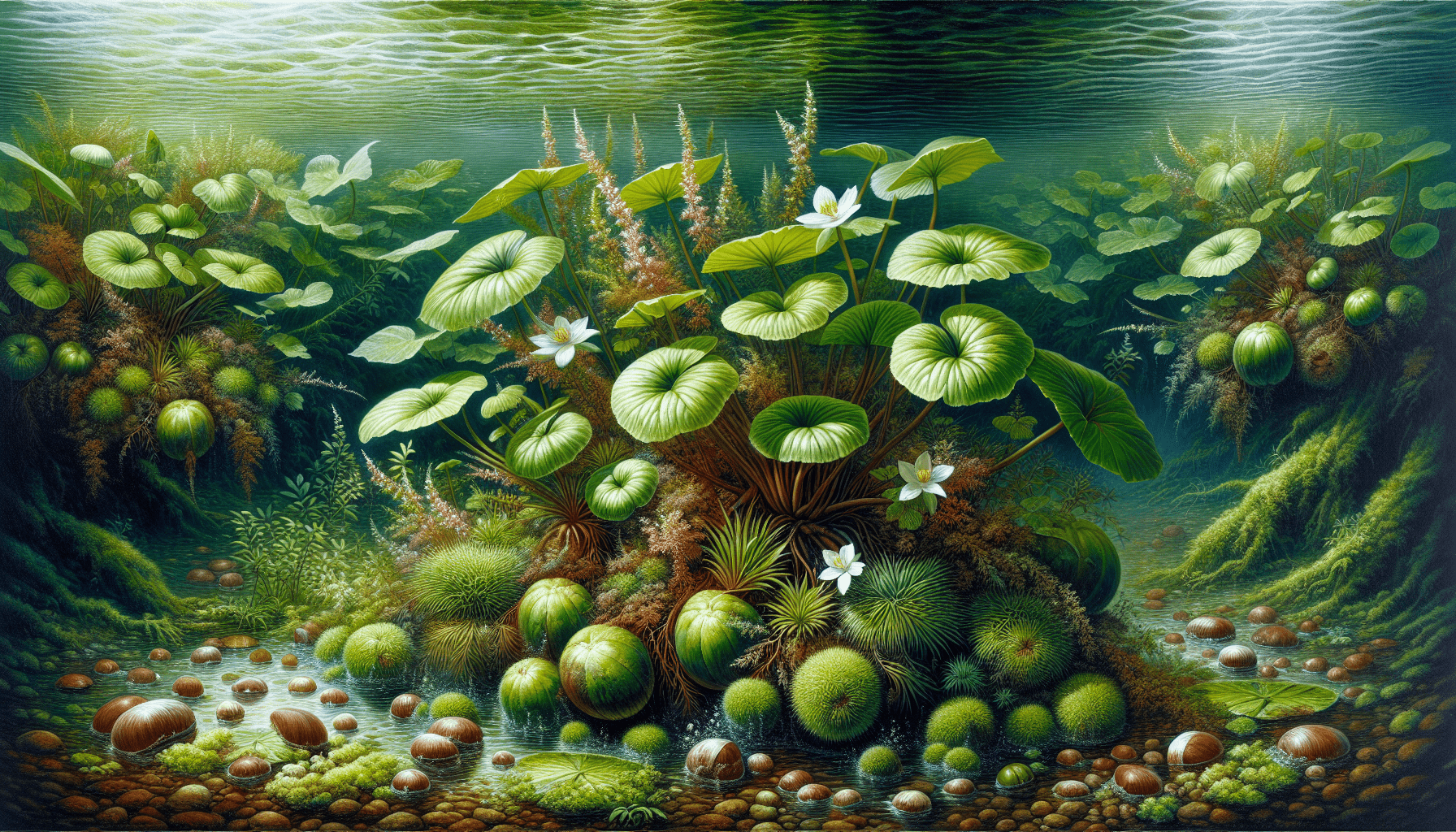In the vast Pantheon of botanical biodiversity, the aquatic plant Chinese Water Chestnut, Eleocharis dulcis, occupies a unique niche often underexamined by many. This article will explore the origin, growth characteristics, culinary usage, and potential ecological implications of this fascinating specimen. You’ll be transported through a journey, navigating the history, growth patterns, and the distinctive cylindrical, cormous tubers of the Chinese Water Chestnut. Furthermore, your understanding will be deepened as we critically engage with the perception of this plant as an invasive species in certain regions around the globe. Be prepared to expand your botanical knowledge on this often-underappreciated aquatic culinary delight.

Botanical Description of Chinese Water Chestnut
The Chinese Water Chestnut, often known as Eleocharis dulcis, is a perennial aquatic plant native to Southeast Asia. In growth, it bears unique physical characteristics that well equip it for its water-soaked environments.
Physical Characteristics of the Plant
The plant is typically a grass-like sedge reaching approximately one meter (3.3 feet) in height. With tuberous roots held just below the water surface, the plant is well anchored against water currents and wind action. These roots are known for their glossy dark brown skin and white, crisp interior.
Details about Its Leaves and Flowers
The leaves of the Chinese Water Chestnut are long, slender, and hollow. They encase the stem, creating a cylindrical shape while underwater. The flowers of this plant, though insignificant in appearance, hold a subtle charm. Arranged in a small, spike-like cluster at the stem’s top, they are a pale greenish-brown or yellow hue, adding an understated elegance to an otherwise simple plant.
Growth Habit and Selection
The Chinese Water Chestnut grows extensively throughout the warm and subtropical regions of the world, both wild and in cultivation. It thrives in freshwater marshes, swamps, flooded paddies, and along the lake and river edges. The plant’s growth habit is largely spreading, and it reproduces both sexually, through flowers and seeds, and asexually, using its tuberous roots.
Scientific Classification of Chinese Water Chestnut
Kingdom, Order, and Family
The Chinese Water Chestnut is classified under the Plantae Kingdom, signifying its status as a plant. In order, it falls under the Poales, a collection of flowering plants including grasses and sedges. More specifically, it is a member of the Cyperaceae family, a group commonly known as the sedge family.
Genus and Species
The plant belongs to the Eleocharis genus, a diverse group of annual or perennial flowering plants also known as spike-rushes. The specific species to which the Chinese Water Chestnut belongs is Eleocharis dulcis, a perennial plant valued for its edible corms.
Botanical Name and Common Names
The botanical name of the Chinese Water Chestnut is Eleocharis dulcis, but it is more commonly referred to as water chestnut, groundnut, or arrowhead in various parts of the world.
Habitat and Distribution of Chinese Water Chestnut
Native Geographical Areas
The Chinese Water Chestnut is native to many Southeast Asian countries, including the Philippines, Indonesia, Thailand, Taiwan, and regions of mainland China.
Countries and Environments Where It Thrives
Today, it is cultivated in a plethora of countries exhibiting warm climates, including India, Australia, tropical Africa, the Pacific Islands, and sections of the United States such as Florida and California. The plant flourishes in freshwater lakes, ponds, and marshes where it is rarely subjected to drought or frost conditions.
Cultivation Zones in the World
The primary cultivation areas of the Chinese Water Chestnut are Southeast Asia and Southern China. Nonetheless, Australia, Africa, and the United States are beginning to recognize the plant’s potential and include it in agricultural rotations more frequently.

Cultivation Methods of Chinese Water Chestnut
Preferred Soil Types
The plant does best in fertile, muck-like soil that is permanently or temporarily inundated with shallow, standing water.
Water and Sunlight Requirements
As its name suggests, the Chinese Water Chestnut is an aquatic plant, necessitating a steady water supply. Furthermore, it requires full sun to partial shade for optimum growth.
Propagating Chinese Water Chestnut
The Chinese Water Chestnut is typically propagated through its tubers. Following harvesting, select mature, healthy tubers are stored in a cool, dark space until the next planting season. These are then sown directly into the wet soil of the cultivation field, ensuring that the upper section of the tuber remains exposed.
Uses of Chinese Water Chestnut
Culinary Applications in Different Cuisines
Aside from its ecological significance, the corms, or tuber parts, of the Chinese Water Chestnut are valued for their fantastic texture and subtly sweet flavor. In Asian cuisine, they are a common ingredient in stir-fries, salads, curries, and even desserts. Western preparations, on the other hand, frequently include them canned or sliced in salads.
Nutritional Value and Health Benefits
Nutritionally, the Chinese Water Chestnut is high in fiber, potassium, and vitamin B6, giving it considerable health benefits. It promotes digestive health, regulates blood pressure, and helps in boosting immunity.
Landscape and Ornamental Uses
Given their grass-like appearance, Chinese Water Chestnuts are a popular choice for ornamental ponds and water gardens, introducing texture, shade, and diversity to these aquatic landscapes.
Harvesting and Storing Chinese Water Chestnut
Harvesting Methods and Time
Harvesting usually takes place once the plant has matured and the top of the foliage has browned and withered to ground level. The tubers are hand-harvested by pulling the plant and digging in the soil to retrieve the edible corms.
Proper Storage Techniques
After harvesting, the corms are cleaned, dried, and stored in a cool, dark place to maintain their freshness and sustain their crisp texture.
Shelf-life and Quality Retention
Under adequate storage conditions, the Chinese Water Chestnut can maintain its quality and remain consumable for several weeks. Canning or freezing can further extend this period.
Cultural Significance of Chinese Water Chestnut
Role in Traditional Chinese Festivals
In Chinese culture, the Chinese Water Chestnut plays a significant role in the Moon Cake Festival. The corms are integrated into moon cakes to symbolize reunion and harmony.
Symbolism and Myths Associated
The plant’s hardy nature and fast growth rate are believed to represent resilience and abundance, commonly used as metaphoric symbols in Chinese literature and folklore.
Use in Traditional Medicine and Healing
In traditional Chinese medicine, the Chinese Water Chestnut is employed to lower blood pressure, promote good health, and treat ailments like measles, fever, and appendicitis.
Chinese Water Chestnut in Scientific Research
Medical and Pharmaceutical Studies
The Chinese Water Chestnut is a subject of extensive research for its nutritional composition and potential health benefits. It also shows promising potential in the pharmaceutical sphere because of its antimicrobial compounds.
Agricultural and Horticultural Research
In agriculture, researchers are exploring the Chinese Water Chestnut’s potential as a sustainable food crop and its capacity to extract heavy metals from contaminated soil and water.
Environmental Impact and Sustainability Studies
Environmental studies of the Chinese Water Chestnut focus mainly on its growth habits, how it responds to different environmental conditions, and the consequences of its uncontrolled colonization, given its invasive potential.
Pests and Diseases Affecting Chinese Water Chestnut
Common Pests and Their Control
Chinese Water Chestnuts are relatively resistant plants, but they can be susceptible to some pests. These might include rodents and some types of aquatic insects. Biological or natural predators are often used as a control measure to keep the population of these pests under control.
Disease Symptoms and Preventive Measures
The plant has few major diseases. However, fungal infections could occur under poor growth conditions or practices. Proper hygiene and well-maintained growing conditions can prevent these infections.
The Impact of Ecological Factors on Health
Changes in water levels, temperature, and pollution can impact the health and productivity of Chinese Water Chestnuts, potentially leading to reduced yields and poor quality tubers.
Conservation and Threats to Chinese Water Chestnut
Endangerment Status and Reasons
While the Chinese Water Chestnut is not currently under threat, in some regions, it is considered an invasive species and their rampant growth can destabilize local ecosystems.
Conservation Strategies
In places where the Chinese Water Chestnut is native, conservation efforts include maintaining natural habitats, controlling water pollution, and promoting sustainable farming methods to reduce the chances of the plant becoming invasive.
Impact of Human Activities and Climate Change
Human activities like over-harvesting, habitat destruction, and climate changes like global warming potentially threaten the Chinese Water Chestnut’s natural habitats, highlighting the need for sustainable practices and consciousness when cultivating and harvesting this valuable plant.
